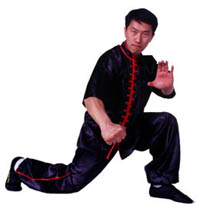|
|
|

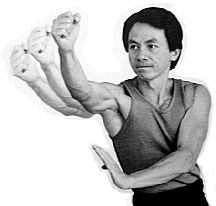
Wing Chun is a system of Chinese Kung Fu that was developed 300 years ago. Its originator, the Buddhist
Nun “Ng Mui”, used her knowledge of Shaolin Kung Fu to invent a way to take advantage of the weaknesses
inherent in the other Shaolin systems. This system was created by combining the best techniques from the broad
array of traditional Shaolin Kung Fu into a simple yet effective style. Eventually, the style was taught to a young
woman named “Wing Chun”, from whom Ng Mui named the art.
Movements in Wing Chun Kung Fu are small and extremely efficient, utilizing subtle shifts of the body to deflect,
evade and counterstrike all in one motion. Kicks in Wing Chun Kung Fu are characteristically low and swift. At
advanced levels they are used as much to check advancing legs and kicks, as they are to kick themselves.
There are three major empty hand forms in Wing Chun Kung Fu. They are Siu Lim Tao, Chum Kiu, and Biu Gee
form. It is important for the practitioner to fully understand each form’s techniques before continuing with the
other forms. This is an absolute requirements if one is to develop to his or hers maximum potential in the Wing
Chun Kung Fu system.
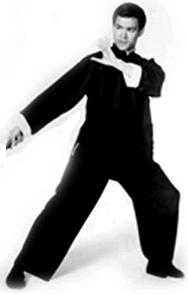
Siu Lim Tao Form
Siu Lim Tao is the first form in Wing Chun Kung Fu. The name means “little imagination”, and refers to the need
for the practitioner to use his or hers imagination in the practice and application of techniques. Most moves are
repeated three times, the primary attack is a sunfist, thumb facing upward on impact, and a variety of arm parries
and blocks employed. There is no footwork in this form.
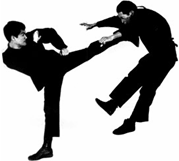
Chum Kiu Form
The second form of Wing Chun Kung Fu, Chum Kiu means “bridge-seeking”. Chum Kiu Form adds a few new
moves to a skeleton of techniques from Siu Lim Tao Form, but adds more sticky-hands and bridge techniques.
Bridge techniques are extended arm moves that intercept and redirect incoming attacks without using the brute
power required in blocking. These techniques take advantage of the physics of swinging objects, in that there
is very little force generated by an object the closer one moves towards the point of origin of the attack. Chum
Kiu Form also introduces the three basic kicks of Wing Chun Kung Fu, all aimed at the knees or lower.
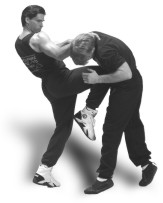
Biu Gee Form
The last empty hand form of Wing Chun Kung Fu is called Biu Gee. “Thrusting fingers”. It is a primary offensive
form, using finger thrusts and spear hands in a variety of ways. There is more footwork, sweeps, low kicks and
stance shifts in this form than the first two. Like the first two forms of Wing Chun Kung Fu, Biu Gee Form builds
up very strong elbows, lower arms, and strong stances.
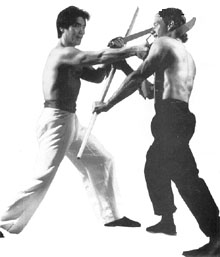
108 Mok Yan Jong Form
The 108 Mok Yan Jong Form trains the practitioner of Wing Chun Kung Fu the skills of sensitivity, distance and
positioning. This form includes hundreds of fundamentals and advanced techniques. This form is practice in
front of the Wing Chun Wooden Dummy also known as Mok Jong.
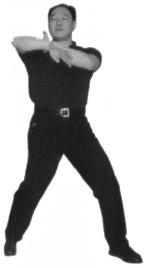
Wing Chun Kung Fu’s simplicity is the reason why beginning practitioners can use this art effectively. It is
logical, scientific and simple Chinese Martial Art system that was developed purely for practical and effective
self-defense alongside fitness for people of all ages. This is one of the reasons why Wing Chun Kung Fu is one
of the most popular styles of Chinese Kung Fu in the world. It emphasizes and utilizes natural and efficient body
mechanics, eliminating the necessity to use and rely on size and strength and is therefore suitable for anybody,
regardless of age, sex, body type or physique.
